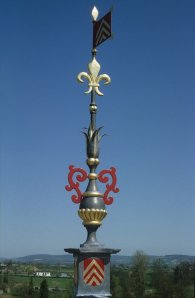
‘Du Blé for ever’ (the family motto)
Already regarded as ‘noble men’ in 1022, the du Blé became lords of Cormatin in the early thirteenth century.
At the end of the sixteenth century, the wars of religion allowed Antoine du Blé to increase his influence and wealth. He became master of southern Burgundy in the name of the Catholic League before ‘turning coat’ and bringing the right bank of the Saone under the authority of Henri IV, in opposition to the Spanish Franche-Comte.
In return, he became lieutenant general and governor of Chalon sur Saone, then a strategic stronghold.
His son Jacques was received at the Court of France. From 1610 he was an intimate of the Queen Regent Marie de Medici. In 1617, at age 35, he married Claude (aged 13), daughter of Raymond Phélypeaux, Treasurer of the Savings, Secretary of State, one of the most influential men of the moment.
In 1618, Jacques du Blé received one of the first titles of Marquis created by the young Louis XIII. In 1628 he was made responsible for conquering the marquisate of Monferrato in Italy. Without money, food or ammunition, his troops were ‘defeated as snow would be melted by fire’ (Richelieu).
Humiliated, he tried to regain his honor by a brilliant action. During the siege of Privas, before the king, he launched a daring attack during which he was killed (May 14, 1629). His soldiers avenged his death by a massacre during the capture of the city.
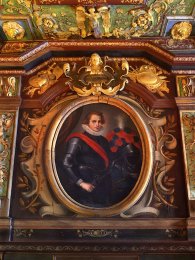
Subsequent generations resided very little in Burgundy. But Nicolas du Blé, Marshal of France, governor of Alsace and a member of the Council of Regency on the death of Louis XIV in 1722 was exiled there for his opposition to the alliance with England.
His nephew and heir, Henri-Camille de Béringhen, First Equerry to King Louis XV, then left all the marquisate of Huxelles to his natural daughter, Sophie Verne.
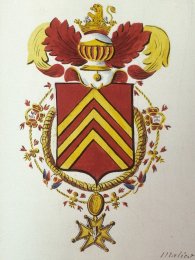
Burgundian wine saves the chateau!
With her, the chateau came back to life in the summer. Her husband, Pierre Dezoteux, aide-de-camp to Rochambeau during the American Revolutionary War, established many specimen trees in the gardens (tulip trees, swamp cypresses).
During the ‘Great Fear’ in 1789, he managed to calm the rioters, who aimed to burn the castle, by rolling out all the barrels from the wine cellars for them ...
During the Revolution he became head of the Chouans of Brittany, while his wife, remaining in Cormatin with her six children, was not troubled. The chateau came through the storm unscathed. However, in 1815, some dodgy alterations caused the collapse of the south wing.
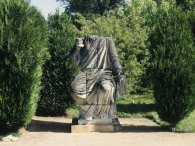
The romances of the poet
In 1812, Lamartine seduced the daughter of the owners, Nina Dezoteux, wife of the Count of Pierreclau and a son was born of this dalliance. The poet often returned to the château after 1843, when one of his relatives, Henri de Lacretelle, inherited it. He wrote a significant part of ‘The History of the Girondins’ there, thanks to the family archives. In 1847, he met his political friends in Cormatin to write his republican and socialist programme. Printed in Macon, this text excited interest throughout Europe at the time of the 1848 revolutions.
To preserve the memory of the event, a statue representing the Second French Republic was erected in the courtyard in 1849. It has survived but ... decapitated.
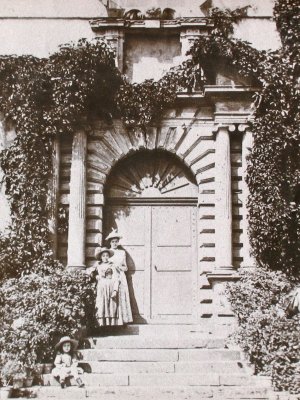
On July 14 1888, Jacques de Lacretelle was born at the chateau: he was one of the great French writers of the twentieth century (Silbermann). In his series of novels ‘Les Hauts-Ponts‘, he was inspired by the tragedy for his family from the loss of the estate, sold in 1898 to Raoul Gunsbourg.
Under this Director of the Monte-Carlo Opera, Cormatin became a summer retreat for the world of entertainment and politics. Each year, the ‘Musical Concours of Cormatin’, chaired by the composer Jules Massenet, heard an operetta or an opera before the facades of the chateau. The performers were prestigious: Caruso, Chaliapine, Litvine, Tamagno, etc.
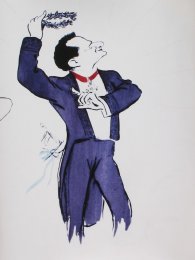
After this brilliant period, more than 50 years of neglect lead Cormatin to the brink of ruin. In September 1980, Anne-Marie Joly, Marc Simonet-Lenglart, and Pierre-Albert Almendros acquired this ‘masterpiece in peril’. Since then they have been dedicated to its restoration and development, with the support of the 60,000 people who visit the chateau each year.
From 1982 to 1995, the restoration of the chateau also received financial aid from the Ministry of Culture and the Conseil Général of Saône et Loire for the restoration of facades, the re-excavation of the moat and the renovation of the seventeenth century painted decor.
 Fr
Fr  En
En